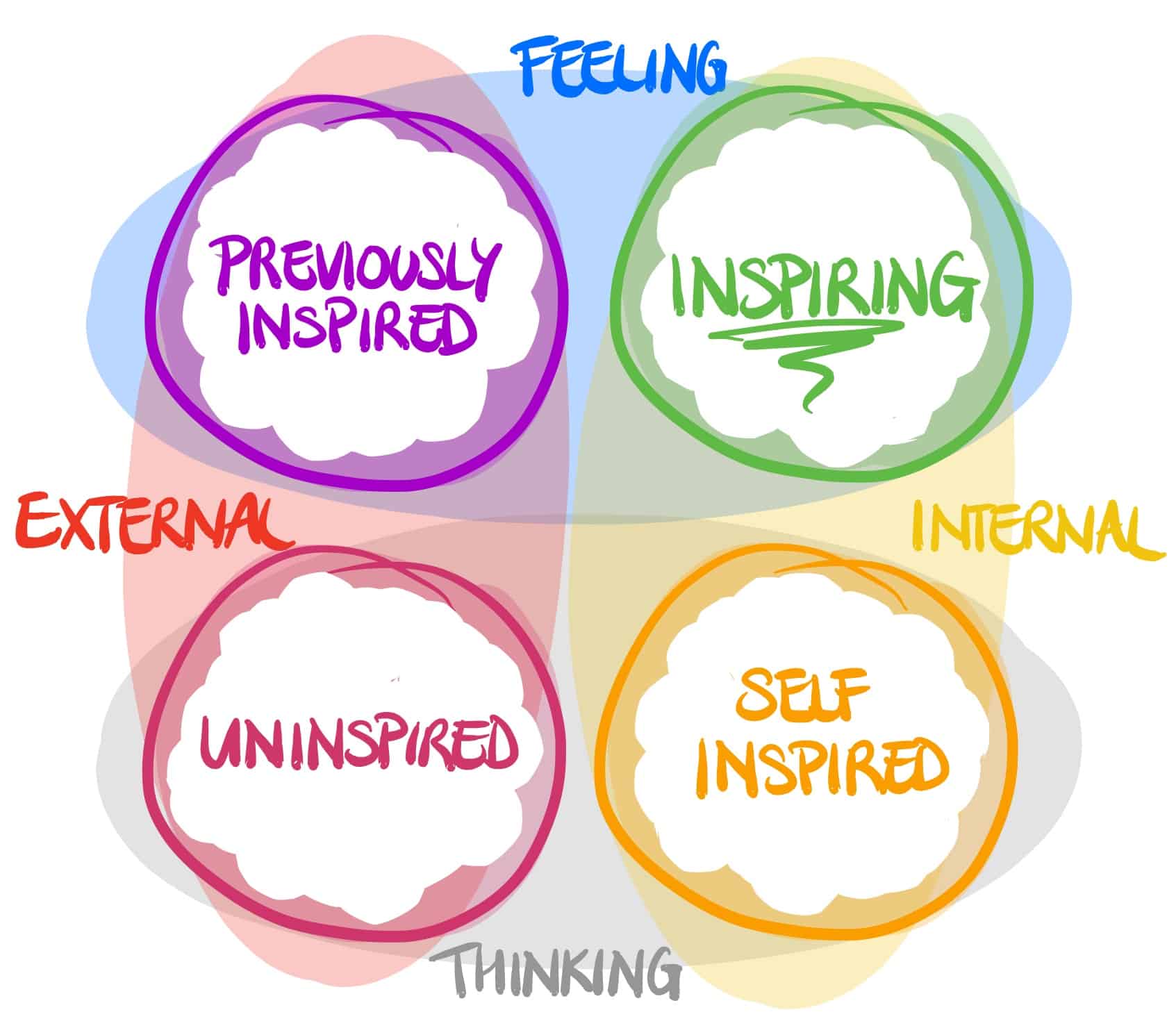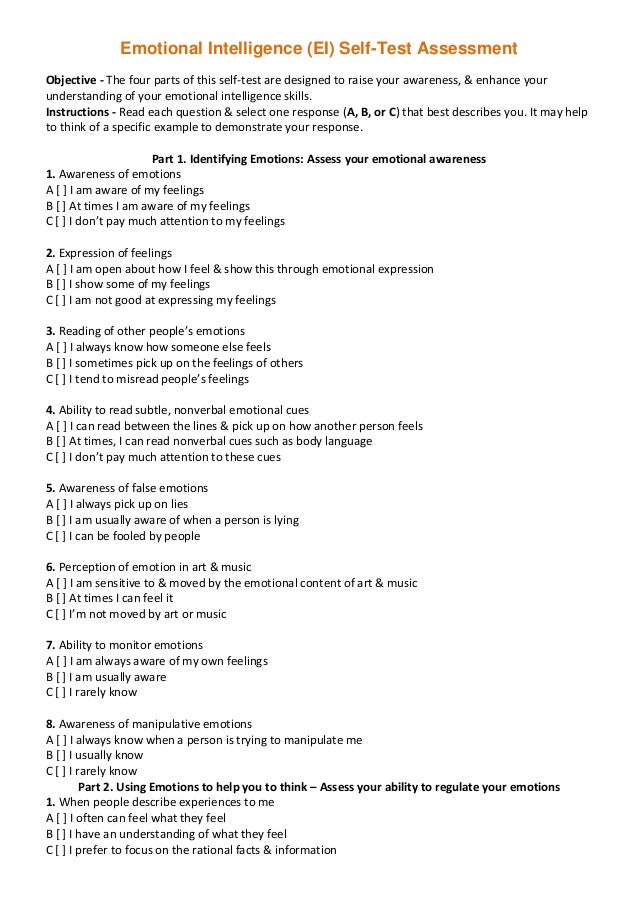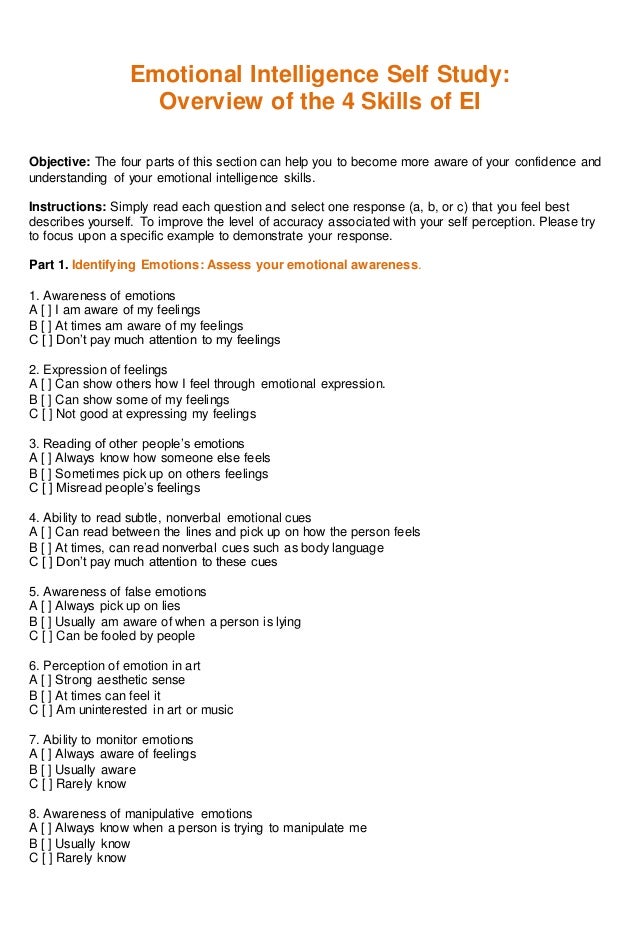which best describes a sense of self
 Sense of Self: What It Is and How to Build It
Sense of Self: What It Is and How to Build ItSearch formPersonal Instructions Sign in Need further clarification? Click to open the support page for this content. Feeling of Being: An Introduction All children and young people develop a sense of themselves through their experiences of life, knowledge and the environment. This lesson provides an introduction to factors that play a role in developing a sense of self and how it can support children and young people. LearnKnow Secondary Tapas You are a unique individual with thoughts, emotions and behaviors independent of your family, friends and coworkers. You have the ability to see, understand and know the world around you in a way only you can. You have the ability to grow, change, prosper and set goals for yourself. You developed these skills, strengths and knowledge during your life. Think of when you were a school-aged child. You didn't become the person you are today on your own. Probably, there were adults in your life who helped you realize these skills and strengths you were developing. Perhaps a teacher helped him to see his artistic ability, or a family member encouraged him to test for a team or enter a writing contest. Cultural and family traditions and beliefs also played a role in the person in which it has become. You are an individual who has used your experiences to develop a sense of self. As a member of the school-age staff, it will be responsible for encouraging and supporting children as they develop their own sense of self. You will do this by planning activities and experiences that are intentional and strive to help children become individuals with positive images and a healthy self-esteem. What is a sense of Being? Our sense of self includes the roles, attributes, behaviors and associations that we consider most important about ourselves (Ylvisaker, 2006). Examples of things that help develop who we are as individuals can include our occupations, pastimes, affiliations, skills, personality traits and spiritual beliefs. How we identify ourselves and how we feel about ourselves is largely the result of our immediate environment and environment. For example, if you are a member of an encouraging or nutritious environment, you are more likely to feel accepted and confident in your abilities. While if you are part of a non-solidary or negative environment, you may have difficulty discovering who is due to lack of acceptance and encouragement to explore your interests and positive attributes. Think of a person you know you have confidence in your ability to perform a particular task or skill. It is possible that this individual has received positive feedback and support from others, which helped to promote the development of these skills and to foster a sense of identity. As we grow and mature during our lives our identities can also change depending on time and place. Relationships, paternity and other life events can help shape our identities. Think about who you were 10 years ago. Do you feel like the same person now? Whether it's 19 or 59 years ago a decade, your concept of who you are is likely to have changed somehow. Perhaps you have achieved great goals like winning a title or starting a family, and these events have changed how you see yourself. Maybe experiences like caring for an aged parent or ending a long-term relationship have put into question things you thought you knew about yourself. Your interactions with others can also shape your sense of self. For example, if your family commends your cooking capacity you can come to believe that you are a good cook. However, if you were to sign up for a cooking class, your perception of your skills can change when you are in the company of others with similar or more advanced culinary talents. In this example, his sense of self was altered, although his ability to cook remained the same. Your sense of self was not judged as true or false, but rather, good enough or not good enough because of the situation. If you really like to cook, however, and gain some joy from it regardless of who else is in your presence, you are less likely to need encouragement from others because you are motivated from within. A sense of self encompasses the self-esteem of the child, self-esteem, identity and self-esteem. It is a combination of how children see themselves, their experiences, and their environment and how they feel themselves. For school-age children, a sense of self is linked to their developing identities, which are becoming increasingly independent of their families. According to Mark Ylvisaker, researcher of communication disorders, there are seven experiences that contribute to the construction of a positive and productive sense of self: Acceptance and respect The level of acceptance and respect of the relevant adults remains a strong contributor to the sense of personal identity of an individual at all ages. Respect for others is communicated through the expression of genuine thoughts and interests, as well as with reasonably high standards for their behaviors and levels of skill. The communication and non-judicial opinion of families are also important components of respect. Success with significant tasks A positive sense of self-esteem and self-esteem ultimately derive from significant achievements. As a member of the school age, it must be creative in identifying activities and tasks in which it can experience significant success and ideally a sense of contribution. Association of positive role models People who remember someone with strong values or a great internal strength before starting a difficult task tend to put more effort into the task and achieve at higher levels than if they had not had the positive association before the task began. Honest Reaction By giving feedback, you must be honest, respectful and specific to the task you refer to. Instead of saying, "Good job!" to a child who successfully completed a great puzzle, try to say, "Wow! You worked so hard to put that puzzle together. That took a long time and you didn't give up." Genuinely challenging and meaningful tasks Creating experiences and opportunities that are meaningful and appropriate to the level of development of a school-age child and supporting daily routines can help contribute to a positive sense of self. The knowledge of each child and of appropriate development practices will be essential when planning their activities and experiences. Opportunities for meaningful pair interaction Finding opportunities that can contribute to the continued support of pairs can help contribute to a positive sense of self. Addressing defeats The defeats are part of everyday life. Sometimes things don't work or go as planned, and learning to deal with these setbacks and turning them into growth opportunities will help build a positive sense of self. The management of frustration is important for school-age children to learn and often need guidance to develop and practice this skill. What is the self-concept? "As children develop an appreciation of their inner mental world, they think more closely about themselves. During early childhood... children begin to build a self-concept that is the set of attributes, skills, attitudes and values that an individual believes defines who he or she is." (Berk, 2003, p. 444). You can remember specific moments where you became aware of particular circumstances that reinforced your own self-concept. Maybe it was during a school or sporting activity, a theatrical or musical performance, or another event when you realized that you had achieved a goal (either alone or with others) that you had set for yourself. Reaching goals that you set and perform tasks that require you to stretch beyond your comfort zone helped you develop a positive self-concept. The relationships you had with loving adults in your life (e.g. parents, grandparents, teachers, coaches) fueled your self-concept while you learned about your unique skills, gifts and talents. Multiple factors, including the cultural background of each child, experiences and, most importantly, their relationships with adults and peers impact the development of a child's self-concept. As well as their own experiences and early relationships with family and peers have influenced the development of their self-concept, they will create positive experiences that will help school-age children in their care to learn about themselves. What does a sense of Being mean for school-aged children? According to sociologist Viktor Gecas (1982), adults are able to see in numerous dimensions and can be described in detail with many distinctions in capacity and value within these dimensions. Many years of life experiences have accumulated to form a pronounced, unshakable and realistic sense of self. As school-age children grow and develop in adolescents, their sense of self will grow in complexity and will increasingly be established up to adulthood. According to Erikson's theory of psychosocial stages, the goal of developing children of school age is to fulfill a sense of competence. Between the ages of 5-12, children form their sense of self based on their ability to realize and master skills that are valued by important people in their lives or themselves. Let's discuss what sense of self it means and it seems to children of school age in Lesson Two. What is Resilience? According to Tugade and Fredrickson (2004), there are individuals who seem to "return" negative events quite effectively, while others are trapped in a routine, apparently unable to get out of their negative difficulties and obstacles. Being able to advance despite negative stress factors demonstrates a concept known as resilience. Someone who is said to be resilient is effective in coping and adapting even when faced with loss, difficulty or adversity. That is not to say that they are blind to negativity or do not experience high levels of anxiety and frustration. Instead, someone who is resilient decides to focus on positive aspects and emotions of the situation at a higher rate. Each child has the opportunity to develop and improve personal characteristics and other strengths that act as protective factors or help create a protective barrier for misfortune and change. These strengths, or protective factors, develop in the context of important, safe and receptive relationships with careful adults. They can also be strengthened by protective factors that are within the environments in which the child plays and lives, as well as within the child. Self-protection factors are closely linked to the development of self- and social and emotional well-being. What role does culture play? Culture helps define how individuals look and how they relate to others. Remember that individuals differ in many ways: diversity of languages, cultural diversity, gender diversity, religious diversity and economic diversity (Selmi, Gallagher, " Mora-Flores, 2015). All these aspects of diversity work together to form their sense of self. It is important that you recognize and understand that individuals cannot develop a sense of themselves in the same way. The cultural values of a family shape the development of the self-concept of your child: Culture forms how each one sees us and others. For example, some cultures prefer children to feel calm and respectful when it comes to adults. This does not indicate that a quiet child lacks confidence in himself. It is important to remember that not all families reinforce American cultural values of individualism, competition and assertivity. Young children learn and absorb stories that tell them that they often emphasize the values of a family and affect a child's self-concept. As children grow up and attend school and spend free time with their peers, they learn that others may not have the same values as their family. For example, some families can value academics about sport while another family can value the arts and learn to play a musical instrument. Each family influences the child's self-concept within its cultural context. Small children can describe themselves on the basis of their family values (for example, a young child of a culture that highlights the adequacy with others as a strong value can describe himself as "ability" while another child of a culture that underlines individualism can be described as "a good runner." As a member of the school-age staff, you take on the important task of feeding the sense of self of children, and you must carefully observe and listen to each child. Two of the most studied aspects of culture related to the meaning of self are independence and interdependence. Independence considers people separate from each other, and values ideas such as self-esteem, individual options and assertiveness. Interdependentness means that more value is placed in the group, and ideas such as conformity, concern for others and group decision-making are valued. Children come from families and cultures that value independence and interdependence in different ways at different times. According to the development psychologist Catherine Raeff (2010), culture can influence how you, your coworkers, and the families you see: Take a moment to reflect on the influence your culture has had in your sense of self. How could this influence your teaching philosophy and expectations on your program? What does this mean to you? As a member of the school age you will likely find coworkers, children and family members of a variety of backgrounds and life experiences. It is important that you understand the complexity of the influence of culture on identity, but it is also important that you understand individual differences. For example, a parent who has had a life of encouragement, praise and support may have a very different kind of upbringing or needs of a parent who has experienced extensive criticism, self-doubt and isolation. In addition, a parent can recognize and celebrate the growing abilities of her child and all that she is able to do for herself, while another parent can choose to assume tasks that the child is capable of doing for himself. Depending on how often a child experiences these different approaches, he or she may doubt his or her own skills to control and influence his or her world. As a member of school-age staff, you will need to understand these differences between children and their families in order to provide them with cultural and developmental care and help them succeed in the classroom today and in the years to come. SeeWatch this video as school-age staff members reflect on their own and sense of self and the importance of self-understanding for school-age children and youth. Feeling of the Self: IntroductionNext, this video focuses on how school-age staff members can promote a positive sense of self in their programs. As you observe, reflect on how you help incorporate the family and cultural lives of children into your program. Developing a sense of being DoA as a member of school-age staff, you have the opportunity to support children as they are growing, learning and becoming individuals. School-age children are in a time of their lives when they are learning to take risks and develop and recognize their own identity. You can support this through your reflective planning of experiences and activities for the learning environment. You can also help children:Completing this course To learn more about what you can expect in this course, the Reflection of Autonomic Cultural Comprehension Competence, and a list of resources and activities that accompany Learn, Explore and Apply along the lessons, visit the Cultural Understanding of School Autonomy. Please take into account the References section " Resources at the end of each lesson describes the sources of reference and resources to find additional information on the topics covered. When completing the lessons, you are not expected to review all available online references. However, you are welcome to explore resources further if you have interest, or at the request of your coach, coach, or administrator. ExploreThink in your own sense of self and resilience while completing the next delivery, Auto-Reflection. Understanding ourselves and our own resilience can help us to better recognize and support the strengths and perseverance of children. Share and discuss your answers with a colleague, administrator, coach or coach. Self Reflection Reflecting experiences that helped define your sense of self ApplyOur sense of self includes the roles, attributes, behaviors and associations that we consider most important about ourselves. Examples of things that help develop who we are as individuals can include our occupations, pastimes, affiliations, skills, personality traits and spiritual beliefs. How we identify ourselves and how we feel about ourselves is largely the result of our immediate environment and environment. See the definition of your sense of personal activity and using the eight experiences that Mark Ylvisaker highlights, think of defining moments in your life that helped you develop into the person you are today. Think about how experiences, environments and relationships played a role in their experiences. When you're done, share your answers with your coach, administrator or coach. Defining your sense of Reflect Being in defining moments in your life that helped you develop in the person you are today Glosary TermDescription Autoconcept The set of attributes, skills, attitudes and values that an individual believes defines who is Self-esteem The aspect of self-concept that involves judgments about the value and feelings associated with such trials Self-esteem Another term for self-esteem Autoimage A mental image of our own abilities, appearance and personality Self-identity Who is a person, including their perception of their self-concept, value, skills and personalities, especially in a social context Damn it. Q1 True or False? Children who have experienced adversity cannot bounce and develop traits that can act as protective factors. Q2 This declaration ends: The cultural values of a family... Q3 You're having a family conference with Davinia's parents. After sharing how you would like to encourage Davinia to be more assertive and feel empowered to make more individual decisions on your program, Davinia's parents express their concerns. They say that's not the way they're raising Davinia. What could be the reason for your concerns? Berk, L.E. (2003). Child development. (6th edition). Boston, MA: Allyn & Bacon. Gecas, V. (1982). Self-concept. Annual Review of Sociology, 8, 1-33.Harter, Susan (2012). Construction of the Self: Foundations for Development and Sociocultural (2nd edition). New York, NY. Guilford Press. Raeff, C. (2010). Independence and Interdependence in child development experiences. Child Development Perspectives. 4(1), 31-36.Tugade, M., " Fredrickson, B. L. (2004). Resistant individuals use positive emotions to bounce back from negative emotional experiences. Journal of personality and social psychology, 86 (2), 320.Selmi, A. M., Gallagher, R. J., " Mora-Flores, E. R. (2014). Children ' s curriculum for all students: Integrating play and literacy activities. SAGE Publications. Ylvisaker, M. (2006). Auto-Coaching: A context-sensitive approach, focused on the person to social communication after a traumatic brain injury. Brain Cash, 7(3) 246-258.
:max_bytes(150000):strip_icc()/what-is-self-esteem-2795868_FINAL-1d12e4b54f20465ab8dfd7350b614fee.png)
What Is Self-Esteem?

Top 200+ Best Words to Describe Yourself! - ESL Forums

Which best describes how you're showing up today? | Inspire Tribe

What best describes a sense of self? thoughts and feelings about yourself perception of your - Brainly.com

Top 200+ Best Words to Describe Yourself! - ESL Forums

Solved: 26. Which Of The Following Statements Best Describ... | Chegg.com

Coronavirus pandemic: What are the psychological effects of self-isolation? | Ipsos

Self-Actualization: What It Is and How to Achieve It

Which best describes an internal critic? a) a voice that criticizes your thoughts and actions b) a - Brainly.com
How To Answer "How Would Your Friends Describe You?" (With Examples) - Zippia

Emotional intelligence EI Self Test assessment - free insights for Co…

2.02 Quiz : Sense of Self Part 2 Flashcards | Quizlet

Solved: Us 1) The Six Dimensions Of Wellness Include All O... | Chegg.com

Solved: 1. Historically, The Earliest Social Psychology Ex... | Chegg.com

EDP3004-Module 2& 3 Quiz .docx - Studymate 2&3 The best term for the understanding that gender will remain the same regardless of behaviors or | Course Hero
50 Quiz Questions You Should Be Using | Interact Blog

Solved: QUESTION 9 Which Of The Following Statements Best ... | Chegg.com

HUI23S1E.15Q HEALTH UTILITIES INDEX MARK 2 AND MARK 3 ...

Which statement best describes how the conflict helps make the story engaging? - Brainly.com
Depression Self-Assessment
50 Quiz Questions You Should Be Using | Interact Blog

Solved: 5. Shay Enjoys Speeding Around In Her Car, But Dis... | Chegg.com

What is self-awareness? And how can you cultivate it?

Solved: Model Curl Rogers And Abraham Maslow Focused On Th... | Chegg.com

Why Am I So Emotional? The 4 Step Emotional Acceptance Process ⋆ LonerWolf | Emotions, Self help, Emotional healing

The Top 25 Words to Describe Yourself on Your CV

Emotional Intelligence (EI) Free Validated Self Test

Top 200+ Best Words to Describe Yourself! - ESL Forums
Describe Yourself In 3 Words" - Answering Interview Questions

Solved: 20) Who Developed Humanistic/client-centered Thera... | Chegg.com

Top 200+ Best Words to Describe Yourself! - ESL Forums

Sense of Self: What It Is and How to Build It

Solved: 252 UNIT 4 Clinical Skills And Care 41. Which Of T... | Chegg.com
Personality Test Page: Which Color is Your Personality?

Solved: Section A Match Each Person To The Term That Best ... | Chegg.com

Module 4 - LECTURE - Soci 100 - MacEwan - StuDocu

What Song Best Describes You?

250+ Words to Describe Yourself in Any Situation
Which best describes the effect of the repetition of the word "T" throughout "What to the Slave is - Brainly.com
Posting Komentar untuk "which best describes a sense of self"